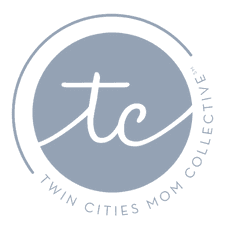
I used to be a good teacher. Until I got my own kid.
I also used to be really good at telling parents what they should and shouldn’t do to help their child be ready for that first day of Kindergarten. And maybe a little too quick to judge when they weren’t following my seemingly realistic suggestions.
“Check your child’s folder every day.”
“Read at least 20 minutes a day with your child starting from the time their ears are developed in utero.”
“Always be on time to school.”
“Set up play dates and socialize your child.”
“Make sure your child can do everything by themselves, especially zip their coat.”
“Never let them watch TV, unless it’s Sesame Street.”
Obviously.
Sound familiar?
Then my kid went to preschool. And, shoot.
I hang my head in shame when it comes to the number of times a week I [don’t] check my son’s take home folder. That bag from school with the book I’m supposed to read to him all week? Yeah, no. I really don’t have the time or energy for play dates, and I honestly can’t get the kid to sit down and do any sort of work that requires mental energy in the evenings. I don’t have mental energy in the evenings. And I confess, I give in and zip his coat for him sometimes. He’s four. I only feel guilty about a couple of those.

While I feel like I do a lot to help my son get ready for kindergarten, it just doesn’t look like the way I, the teacher, imagined it would. I feel like the expectations teachers give parents aren’t always realistic. I can say that, I’m a teacher. This year has been a test as I find myself on the other side now as both teacher and parent. I am now the one preparing my own son for Kindergarten and it’s been eye opening, to say the least.
I am a single mom, and society seems to tell us that children in single parent households tend to miss out on learning opportunities in the home. The picture we’re given is that of a worn down woman who sits her child in front of meaningless TV while her arms overflow with dirty laundry. I’m worn out and I for sure sit my kid in front of the TV, but that doesn’t mean my child misses out on learning opportunities in our home.
It also doesn’t mean children of two parent households are automatically getting the academic stimulation that their young brains need either.
A few years ago someone tried telling me that just living in my household, despite all the reasons I’m given to worry, was good enough for my son to succeed in school. As in, my demographics were enough to cancel out the single mom factor. In all my years of working with children and their families, I have learned that beyond wealth and resources, and the number of parents living in the house, comes one thing that parents of Kindergarten-ready students consistently do.
They teach their children with intentionality.
Yes, we need to be intentional. Children are curious and learn from their environment, but they will miss out on valuable learning opportunities if the grown ups around them don’t put some effort into supporting that curiosity and wonder. You are your child’s first teacher from the moment they are first placed in your arms.
That seems like a lot of pressure, right?
Well, as I’ve grappled with the fact that even I can’t follow my own teacher suggestions for parents I decided to reevaluate my expectations. Not lower them, but look at them through a more realistic lens. With that in mind, I’ve come up with three extremely effective things that I believe all parents are able to do to support school readiness.
Yes, you- the mama that feels unmotivated, the extremely busy, the overwhelmed, the quiet one, the one who’s afraid to get down on the floor and play, the mama who feels unimaginative and without resources. The one who has found this teaching your kid at home thing doesn’t come as natural as you thought. Even you.
Even me. The teacher who is supposed to be really good at this but has found it’s not so easy after all.
So, read this guide knowing that the teacher in me says these are effective practices. But most importantly, read these knowing that the parent in me says these are actually possible!
Talk with your child
How to do it: Ask your child questions and encourage them to seek answers to the questions they have. Don’t be afraid to use big words, but do take time to explain them. Talk about everything you see like colors and numbers and letters in their environment. Talk about names and the letters you see. Talk about the sounds and forms of letters. Count everything you see. Talk about feelings and ideas and ask open-ended questions. You don’t need to be a talkative person to describe everything you see around you!
Materials: The best part about this is that you don’t need anything to do it! Talk about what you see in your house, your neighborhood and the stores you visit. Talk about the letters in family members’ names. But, by all means, talk. The number of words you use with your child will significantly increase their chances of success in school.
Your goal: To encourage your child to use their environment as their learning ground because this is where they will use everything they learn in school. This is where life makes sense to them and you and your family are naturally a part of it. School used to be about taking in information, but now it is about teaching your child creative ways to contribute information and problem solve. In the early years, this happens through talking.
Academic Concept Supported: The ability to ask questions, solve problems, share thoughts and ideas as well as the ability to explore one’s environment.
*Source: The Early Childhood Indicators of Progress (ECIP)

Read with your child
How to do it: Find a time to integrate reading into your schedule even if it’s just a few minutes a day. Encourage caregivers to read as well. Provide as many books at home as you can. You’ll want to ask questions about the story, predict what will happen next, talk about colors, letters, alliteration, rhyming and anything else that interests your child. When we don’t have much time to read together at home I try to read to my son in waiting rooms and sometimes I just tell him stories aloud in the car. I also make sure he has books within reach when we drive and pack them in his backpack to read when we are sitting at a restaurant.
Materials: Books of your own, library books or access to a Little Free Library, a library card or access to your child’s school library. Think of stories from your childhood or your when your child was a baby to retell when you don’t have books on hand. We’ve gotten most of our books from local second hand stores for around 50 cents to a dollar.
Your Goal: To encourage a love of reading, teach literacy skills, help them follow a storyline and show your child that books are a vital resource in their lives.
Academic Concept Supported: The ability to listen to and understand a story, retell a story, answer questions about a story, guess what will happen next, concepts of print, as well as learn and use new words.
*Source: The Early Childhood Indicators of Progress (ECIP)
Play games with your child
How to do it: Almost every evening in our house we pull out a board or card game to play together. My son doesn’t realize this, but this is the time I help him with school concepts I know he will need in Kindergarten. Don’t push concepts on your child by quizzing them during this time, rather use this time to be playful while interacting with educational concepts. Ages three to four are typically a good time to start playing board games. Although it may be a little difficult at first, with a little practice and support they will get it.
Materials: Games that incorporate numbers and letters such as UNO or alphabet Spot-It, games that require your child to identify numbers, letters or colors such as games with spinners or games that require your child to count spaces as they move. In our house we buy our games from local thrift stores- most of which have a specific day of the week when toys and games are half price!
Your Goal: To make learning fun and low pressure. It’s a good way to spend time together as a family and a good way to help your child practice certain skills such as letter and number identification, cooperation and turn taking.
Academic Concept Supported: The ability to work with others, take turns, count, solve problems, control one’s body as well as name shapes, colors, letters and numbers.
*Source: The Early Childhood Indicators of Progress (ECIP)
So, do I really think we are lazy moms? No. Do I think we are busy and sometimes have our arms full and feel like we aren’t always doing what everyone out there thinks we should be doing for our kids? Absolutely. Not feeling like we are doing enough seems to come with the title. It doesn’t mean we need to lower our expectations or feel bad. And by no means does it mean we shouldn’t check our kids’ folders or completely ignore those tips we’re given by well meaning teachers. It just means we need to make sure the things we can do are as effective and supportive of our little ones as possible!
Does your family have any special ways of supporting academic development at home?




